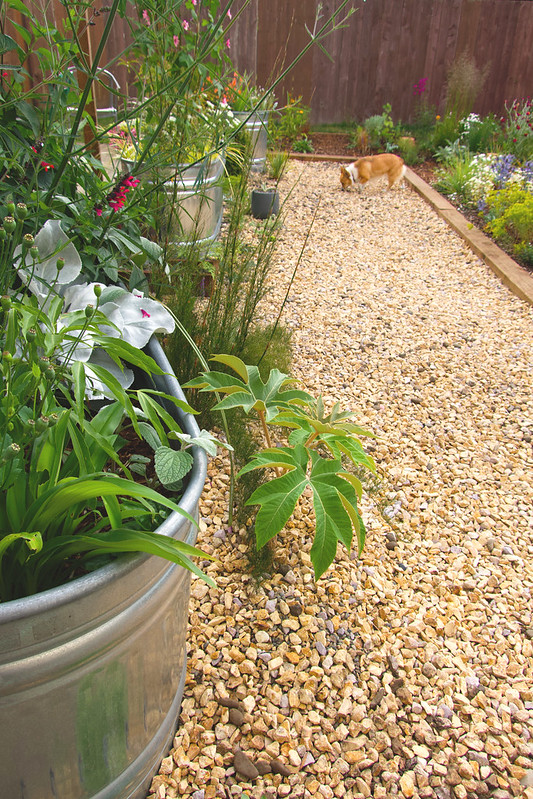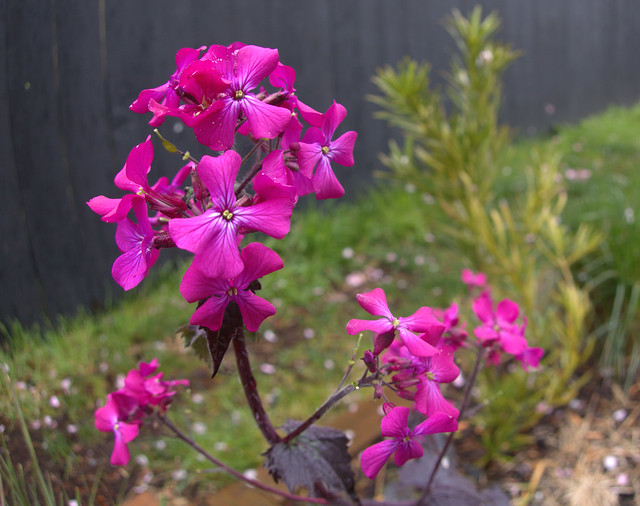The SoCal garden churned through a lot of attempts at growing dieramas. I’d figure they’re South African, I’m zone 10, we should get along famously. So many plant fails are due to faulty assumptions. Matching growing zones is only the beginning of the investigation as to whether conditions are suitable. Dieramas are not for hot dry gardens but come from cool mountainous regions in southeastern Africa. The fact that the famous Slieve Donard hybrids were developed in Northern Ireland says a lot about their preferred growing conditions. Hot and dry conditions in Northern Ireland must be thoughtfully provided, whereas in Los Angeles those are the brutal default conditions. (Simply compare the latitudes of Northern Ireland and Los Angeles for the strength of sunlight, something I’ve only recently started to take into account.) Novices make many such mistakes, but still trial-and-error can prove the astonishing range of plants and bring surprising results — just not, in my experience, with dieramas.
In fact, a theory I brought north to the Oregon garden, that growing conditions here would suit plants that are also happy in Ireland and Northern Europe, has been borne out. Here at the Oregon coast, dieramas bloom from a small size, often the first year they are planted out. No struggle, no gnashing of teeth.
Many faulty assumptions were also absorbed by the mostly photo-less books read in my formative garden years by plants people who were also great writers like Jekyll, Sackville-West, Russell Page, and Lloyd — when they referenced plants for hot, dry areas, I ignorantly assumed it as a ringing endorsement for Los Angeles gardens! British garden writers already had centuries of garden culture at their backs to lend that authoritative, confident tone to their writing. The Empire had been sending out explorers and botanists as far back as 1768, when Joseph Banks joined Captain James Cook’s voyage to observe the Transit of Venus. And all those plant specimens were brought back to the very propitious growing climate of the roughly zone 8 British Islands, which has a lot in common with the climate of the Oregon Coast.
What I’m realizing attracted me in those formative years reading about mostly zone 8 gardens was a framework for thinking about gardens, and the confident inclusion of selections and representations and, most importantly, sequences and chronology of natural cycles in this framework. The relative predictability and structure of planning for spring, summer, fall, and the creativity and purpose unleashed by the hard limitations of frost dates.
That whole psychological notion of the “summer garden” being this rare, fleeting phenomenon you have to grab with both hands, this is what was imparted and took hold in my garden imagination. And that’s what I’ve experienced in the Oregon garden. (And abandoning those misconceived notions is when I really began to explore the potential of the little zone 10 garden in Los Angeles.)

Newly planted this spring, Symphytum ‘Axminster Gold’ has proven robust enough to co-exist with grasses, not an easy niche to fill. Pinched back when planted, it’s branched out and muscled its way up and between the Silver Spike grass, Achnatherum calamagrostis.
I mentioned on June 17th that Joe-Pye weed would eventually have to be moved, maybe next spring. But the idea became embedded like a sliver, and removal of the eutrochium was accomplished within the week. The enormous root ball was not easy to extricate, and because of its extensive roots the entire area was very dry, even after a good rain we had on the 20th of June.
This certainly turned out more long-winded than usual! And on to July. More soon, AGO.
























































































































































